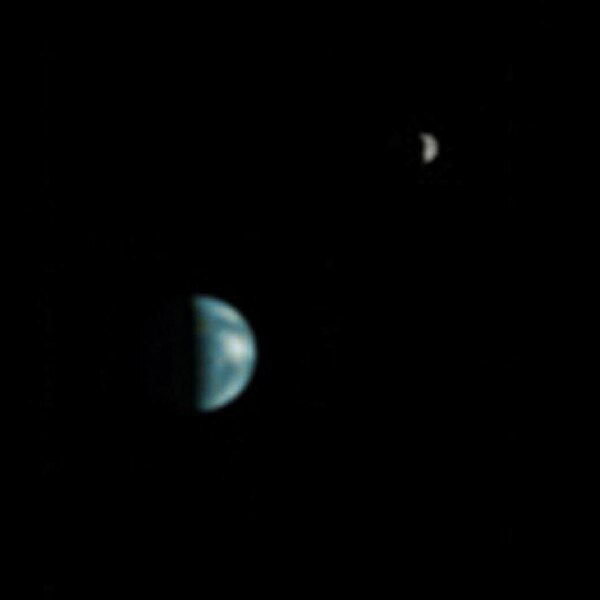Fichièr:Earth and Moon from Mars PIA04531.jpg

Talha d'aquesta previsualizacion: 600 × 600 pixèls. Autras resolucions : 240 × 240 pixèls | 480 × 480 pixèls | 961 × 961 pixèls.
Fichièr d'origina (961 × 961 pixèl, talha del fichièr: 17 Ko, tipe MIME: image/jpeg)
Istoric del fichièr
Clicar sus una data e una ora per veire lo fichièr tal coma èra a aqueste moment
| Data e ora | Miniatura | Dimensions | Utilizaire | Comentari | |
|---|---|---|---|---|---|
| actual | 11 julhet de 2005 a 14.07 |  | 961 × 961 (17 Ko) | Complex01 | Courtesy NASA/JPL/Malin Space Science Systems [http://www.jpl.nasa.gov/images/policy/index.cfm] [http://www.msss.com/moc_gallery/policy.html] Image of Earth and Moon, taken by the Mars Orbiter Camera of Mars Global Surveyor on May 8 [[200 |
Paginas que contenon lo fichièr
La pagina çaijós compòrta aqueste imatge :
Usatge global del fichièr
Los autres wikis seguents utilizan aqueste imatge :
- Utilizacion sus af.wikipedia.org
- Utilizacion sus ar.wikipedia.org
- Utilizacion sus beta.wikiversity.org
- Utilizacion sus bg.wikipedia.org
- Utilizacion sus ca.wikipedia.org
- Utilizacion sus cs.wikipedia.org
- Utilizacion sus da.wikipedia.org
- Utilizacion sus de.wikipedia.org
- Utilizacion sus en.wikipedia.org
- Utilizacion sus en.wikiquote.org
- Utilizacion sus en.wikiversity.org
- User:Emesee/Learning gallery
- User:Marshallsumter/Keynote lectures (draft)/Astronomy
- Solar System, technical/Earth
- Solar System, technical/Moon
- User:Marshallsumter/Radiation astronomy1/Planets/Sciences
- User:Marshallsumter/Radiation astronomy1/Opticals
- User:Marshallsumter/Radiation astronomy1/Objects
- User:Marshallsumter/Radiation astronomy1/Opticals/Quiz
- Object astronomy
- User:Marshallsumter/Radiation astronomy/Courses/Principles/Hourly 2
- User:Marshallsumter/Radiation astronomy/Courses/Principles/Midterm quiz
- User:Marshallsumter/Radiation astronomy/Courses/Principles/Final quiz
- Stars/Solar systems
- User:Marshallsumter/Radiation astronomy2/Scattered disks/Quiz
- User:Marshallsumter/Radiation astronomy1/Kuiper belts/Quiz
- User:Marshallsumter/Radiation astronomy/Astronomy
- User:Marshallsumter/Radiation astronomy/Earth
- Utilizacion sus es.wikipedia.org
- Utilizacion sus fa.wikipedia.org
- Utilizacion sus fr.wikipedia.org
- Utilizacion sus gu.wikipedia.org
- Utilizacion sus hr.wikipedia.org
- Utilizacion sus hu.wikipedia.org
- Utilizacion sus id.wikiquote.org
- Utilizacion sus it.wikipedia.org
- Utilizacion sus ja.wikipedia.org
- Utilizacion sus kn.wikipedia.org
Veire l'utilizacion globala d'aqueste fichièr.


